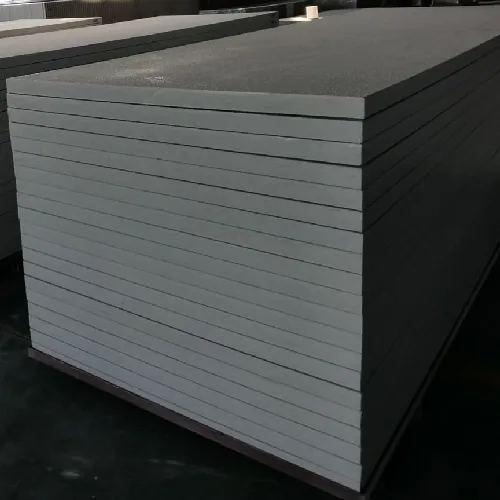loading...
- No. 9, Xingyuan South Street, Dongwaihuan Road, Zaoqiang County, Hengshui, Hebei, China
- admin@zjcomposites.com
- +86 15097380338
- Welcome to visit our website!
grp handrail systems
Understanding GRP Handrail Systems An Overview
In various industries, safety and reliability are paramount, particularly when it comes to the installation of handrail systems. Glass Reinforced Plastic (GRP) handrail systems have emerged as a leading solution for ensuring safety while enhancing aesthetic appeal in both industrial and commercial environments. This article will delve into the features, benefits, and applications of GRP handrail systems, highlighting why they have become a preferred choice for many.
What is GRP?
Glass Reinforced Plastic (GRP), also known as Glass Fiber Reinforced Plastic (GFRP), is a composite material made from a polymer matrix reinforced with glass fibers. This combination offers a unique set of characteristics that make GRP not only strong and durable but also lightweight and resistant to corrosion. These qualities are particularly advantageous in environments where traditional materials like steel or wood may falter over time due to harsh conditions.
Key Features of GRP Handrail Systems
1. Corrosion Resistance One of the standout features of GRP is its resistance to chemical damage. Unlike metals, GRP does not rust or corrode, making it ideal for coastal areas or environments with high exposure to chemicals, such as water treatment facilities and manufacturing plants.
2. Lightweight GRP handrails are significantly lighter than their metal counterparts. This feature simplifies transportation and installation, reducing labor costs and time. Despite their lightness, they maintain high strength and durability.
3. Non-Conductive GRP is a non-conductive material, which enhances safety in electrical applications or where there is a risk of electric shock. This quality makes GRP handrails suitable for use in environments where electricity is a concern, such as substations or factories.
4. Low Maintenance The longevity and resistance to the elements mean that GRP handrail systems require minimal maintenance. Unlike wood, which may rot or decay, or metal, which may require regular painting or treatment to prevent rust, GRP handrails maintain their form and function over time.
5. Customizability GRP handrail systems can be tailored to suit specific needs in terms of design, color, and dimensions. This flexibility allows businesses to integrate handrails seamlessly into their existing architectural designs while still adhering to safety regulations.
grp handrail systems

Advantages of GRP Handrail Systems
The advantages of GRP handrail systems extend beyond their physical properties. The use of these handrails provides several key benefits in various applications
1. Safety Compliance GRP handrails help organizations comply with safety regulations, including the Occupational Safety and Health Administration (OSHA) and American National Standards Institute (ANSI) guidelines. Proper handrail installation is crucial in preventing falls and ensuring worker safety.
2. Aesthetic Appeal Available in various finishes and colors, GRP handrails can enhance the overall visual appeal of a space. Whether used in industrial settings or in public areas like parks and walkways, GRP systems can be designed to complement the environment.
3. Environmental Impact GRP is typically made from recyclable materials, and its long lifespan means that fewer resources are consumed over time. This feature aligns with growing demands for sustainable building practices.
Applications of GRP Handrail Systems
The versatility of GRP handrail systems makes them suitable for various applications, including
- Industrial Environments Factories, warehouses, and construction sites benefit from GRP’s robust performance and safety features. - Infrastructure Projects Bridges, walkways, and staircases across public parks and recreational areas utilize GRP handrails for both safety and aesthetics. - Marine Applications Marinas and waterfront properties can rely on GRP handrails, which withstand saline environments. - Transportation Airports, train stations, and public transport facilities utilize GRP handrails to ensure passenger safety while maintaining design integrity.
Conclusion
In summary, GRP handrail systems present a compelling choice for various industries due to their unique properties and benefits. Their strength, durability, and low maintenance requirements make them an ideal solution for ensuring safety in a myriad of applications. As businesses focus more on sustainable and reliable materials, the adoption of GRP handrails is expected to grow, solidifying their place as an essential component of modern safety infrastructure.
-
The Rise of FRP Profiles: Strong, Lightweight, and Built to LastNewsJul.14,2025
-
SMC Panel Tanks: A Modern Water Storage Solution for All EnvironmentsNewsJul.14,2025
-
GRP Grating: A Modern Solution for Safe and Durable Access SystemsNewsJul.14,2025
-
Galvanized Steel Water Tanks: Durable, Reliable, and Ready for UseNewsJul.14,2025
-
FRP Mini Mesh Grating: The Safer, Smarter Flooring SolutionNewsJul.14,2025
-
Exploring FRP Vessels: Durable Solutions for Modern Fluid HandlingNewsJul.14,2025
-
GRP Structures: The Future of Lightweight, High-Performance EngineeringNewsJun.20,2025
